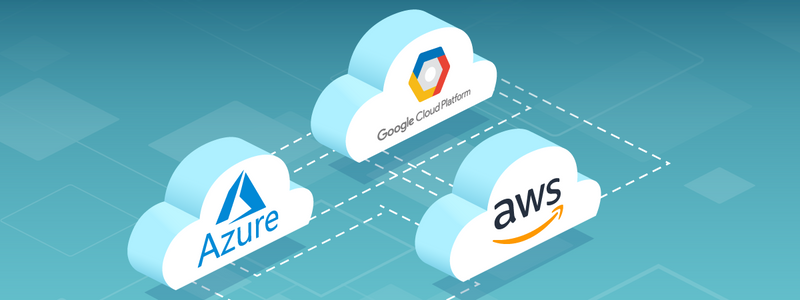The Pros and Cons of a Multicloud Strategy
We’ve been working in the AWS cloud for a decade — we were relatively early adopters of cloud computing. Why? We saw how the cloud offers many organizations better opportunities to innovate and expand. We certainly weren’t omniscient about how ubiquitous and flexible the cloud would become. But as they say, the bigger they are, the harder they fall, so when AWS had a big API outage, we were reminded of the potential for failure. When that event made headlines, many consultants jumped up to trumpet “multicloud” solutions to alleviate such failures. It gave us pause — was investing in one cloud platform a good idea? And that lead us to consider the pros and cons of a multicloud strategy. Hopefully what we share will help you make the right decision for your organization.
Cloud Providers
The big three cloud service providers are Amazon AWS, Google Cloud Platform (GCP), and Microsoft Azure. They represent over 60% of the global cloud computing market. AWS leads the market with 32% market share as an IaaS, PaaS, and SaaS platform. Microsoft comes in second, growing in 2021 to 20% market share with Azure’s specialization on intelligent cloud services. And Alphabet, the parent company of Google, has grown to 9% market share with Google Cloud Platform and Google Workspace. Other cloud platforms, including IBM, Alibaba, and Salesforce, take niche segments of the remaining worldwide market share.
Multicloud Strategy
The premise of multicloud is having more than one cloud deployment (public or private) sourced from different cloud providers. Dynamic organizations increasingly operate workloads across multiple cloud vendors, choosing the best services from each cloud provider based on factors like cost, technical capabilities, and geographic availability. For example, you may select GCP for development & testing, Azure for reporting & analytics, and AWS for backup & recovery. Multicloud is often required with complex mergers & acquisitions or in specific legal situations. If can be a good strategy if it facilitates engineering speed, supplies the best tools for particular jobs, or ensures a better customer experience. One of the gotchas organizations hope to avoid is vendor lock-in.
Advantages of Multicloud
In the newsworthy AWS outage, the obvious first advantage for multicloud architecture was uptime. If one cloud provider suffers an outage, you have options for business continuity. Also, as referenced earlier, multicloud allows you to choose specific services offered by each vendor. In addition, multicloud mitigates financial risk, opening up negotiation opportunities with future contracts. It’s harder for a provider to raise rates or change terms when you have other options.
Disadvantages of Multicloud
First and foremost, operating with multiple clouds adds complexity. We find it much easier to specialize with one platform, so organizations should only pursue multicloud strategies when they have clear business reasons. It becomes more expensive to hire and retain staff. Securing multicloud is challenging. And the more clouds you have, the less you will leverage each cloud. Consistent management across clouds means you won’t use the unique features of those clouds.
The Pros and Cons of a Multicloud Strategy
Multi-cloud is difficult. Before diving into it, weigh the costs and benefits. Many vendors are running the meter when they sell multicloud solutions. Customers find themselves paying more, throwing good money after bad, and ending up with lowest common denominator cloud strategies. That means you may be best off finding an expert partner who specializes in multicloud and has a proven track record (with references!). Consider using a cloud management platform to monitor all your deployments. And you’ll need processes that are repeatable and predictable for each environment.


Leave A Comment